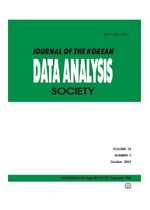투자심리와 주식 유동성 간의 관계
The relationship between investors sentiment and stock liquidity
- 한국자료분석학회
- Journal of The Korean Data Analysis Society (JKDAS)
- Vol.26 No.5
-
2024.101455 - 1467 (13 pages)
-
DOI : 10.37727/jkdas.2024.26.5.1455
- 130

이 연구는 한국거래소(KRX)에 상장된 회사를 샘플로 하여 투자심리가 주식 유동성에 미치는 효과를 알아보고자 (1) 투자심리 수준이 서로 다른 경우 주식 유동성 크기의 차이가 있는지, (2) 투자심리와 주식 유동성의 관계는 투자자별 거래비중에 따라 차이가 있는지, (3) 투자심리와 주식 유동성의 관계는 종목별 정보환경의 차이에 따라 달라지는지를 검정한다. 실증분석을 위해 한국거래소에 2000년부터 2023년까지 상장된 회사의 데이터를 수집하여 회귀분석을 이용해 살펴본다. 실증분석 결과, 가설 설정 시에 예상한 것처럼 개별 기업 투자심리 수준이 높은 경우 주식유동성 수준도 높게 나타났으며, 개인투자자 거래가 많거나 또는 기관투자자 거래가 적은 표본의 경우 투자심리와 주식 유동성의 양(+)의 관계는 더 강화되었다. 또, 주식 시장 정보환경이 상대적으로 열악한 경우에 이 관계는 강화되었다. 본 연구는 기존 연구가 다루었던 투자심리 관련 연구에서 확장해 투자심리가 주식 유동성과 어떠한 관계를 가질지 살펴보고, 여기서 더 나아가 개별기업의 투자자별 거래 비중과 주식시장의 정보환경이 이 관계에 어떻게 영향을 줄지 알아본다는 점에서 기존연구와 차이점이 있다고 볼 수 있다. 투자심리와 주식 유동성이 관련이 있고, 이것이 주식시장 정보환경도 관련이 있을 수 있다는 것은 기업 경영 실무에서도 다양한 시사점을 줄 수 있을 것으로 기대한다.
This paper empirically investigates the relation of investors' sentiment and stock liquidity. Particularly, this research explores whether investors' sentiment is related to stock liquidity and whether the level of individual trading and information environment in each firm affects the relation. Three hypotheses were drawn and tested. To test the hypotheses, stock prices and relevant data of firms listed on Korea Exchange(KRX) were put together, and the hypotheses were studied by panel and Fama-MacBeth regressions. This research discovers that investor sentiment has positive effects on stock liquidity. Further, this study finds that the level of individual trading and the level of information environment increases the positive relation between investors' sentiment and stock liquidity. This work finds individual trading and information has a certain role in the relationship between investors sentiment and stock liquidity. The findings suggest that increased investor sentiment may cause noise trading to increase. In addition, firms with more uninformed trading may have a more liquid stock market.
1. 서론
2. 연구 가설
3. 실증분석 방법
4. 실증분석 결과
5. 결론
References
(0)
(0)